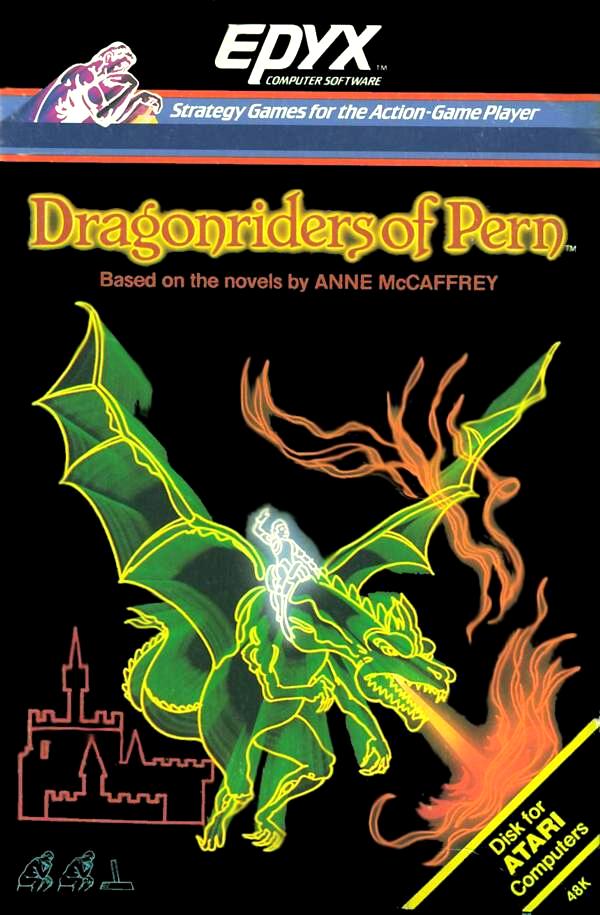
Lord Narwhal ! We accept your offer of alliance ! What do you want us to do ?
Nothing, I just wanted your two victory points !
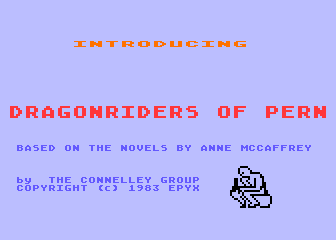
Dragonriders of Pern is a Hugo-award-winning series written by Anne McCaffrey. I will not sum up a saga of 22 books I have not read, but focus on what is important to us : Pern has been colonized eons ago by humans from Earth. Alas, every 250 Turns (= years), Pern passes close to another celestial body called “the Red Star”, an event that allows voracious spores from the Red Star called “Threads” to fall from the sky, burrow into the Pernese ground and destroy everything they touch, except stone and metal. To counter this threat, the Pernese domesticated, sometime in the distant past, fire-breathing lizards and used them to burn the Threads before these had a chance to touch the ground. However, this came at a social and economic cost :
By the seventh Pass of the Red Star, a complicated socio-political·economic structure had been developed to deal with this recurrent evil. The six Weyrs, as the old volcanic habitations of the dragonfolk were called, pledged themselves to protect Pern, each Weyr having a geographical section of the northern continent literally under its wing. The rest of the population agreed to tithe support to the Weyrs since these fighters, these dragonmen, did not have arable land in their volcanic homes. They could not afford to take time away from nurturing their dragons to learn other trades during peace time nor could they take time away from protecting the planet during Passes.
Settlements, called Holds, developed wherever natural caves were found – some, of course, more extensive or strategically placed than others. It took a strong man to hold frantic, terrified people in control during Thread attacks; it took wise administration to conserve victuals when nothing could be safely grown, and it took extraordinary measures to control population and keep it productive and healthy until such time as the menace passed.
Men with special skills in metalworking, weaving, animal husbandry, farming, fishing, and mining formed Crafthalls in each large Hold and looked to one Mastercrafthall where the precepts of their craft were taught and craft skills were preserved and guarded from one generation to another. One Lord Holder could not deny the products of the Craft hall situated in his Hold to others, since the Crafts were deemed independent of a Hold affiliation. Each Craftmaster of a hall owed allegiance to the Master of that particular craft […]. The Mastercraftsman was responsible for the output of his halls and the distribution, fair and unprejudiced, of all craft products on a planetary rather than parochial basis.
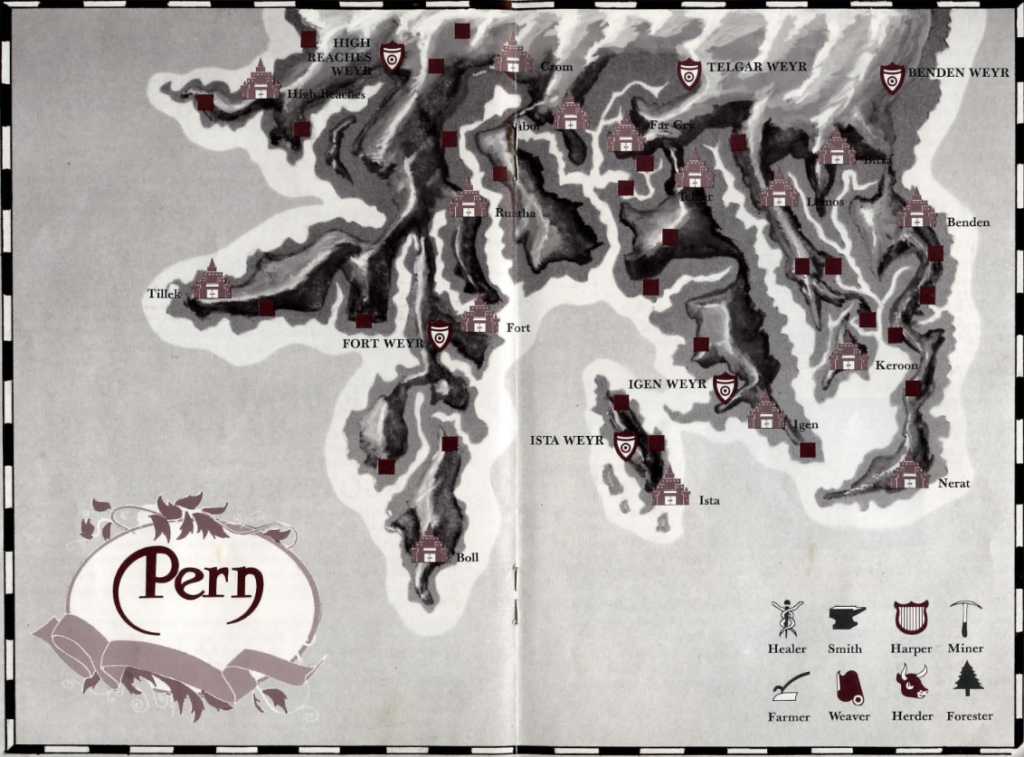
At this point, it is possible that you are excited by the setting, and wonder whether you should buy those books. I thought the same, until I came accross the following sentence : “In learning to direct her queen dragon between one place and another, Lessa discovered that dragons could teleport between times as well”. So yes I removed weird time-travelling shenanigans in my retelling, but I am afraid they are central to the series. At least, they are not used in the game.
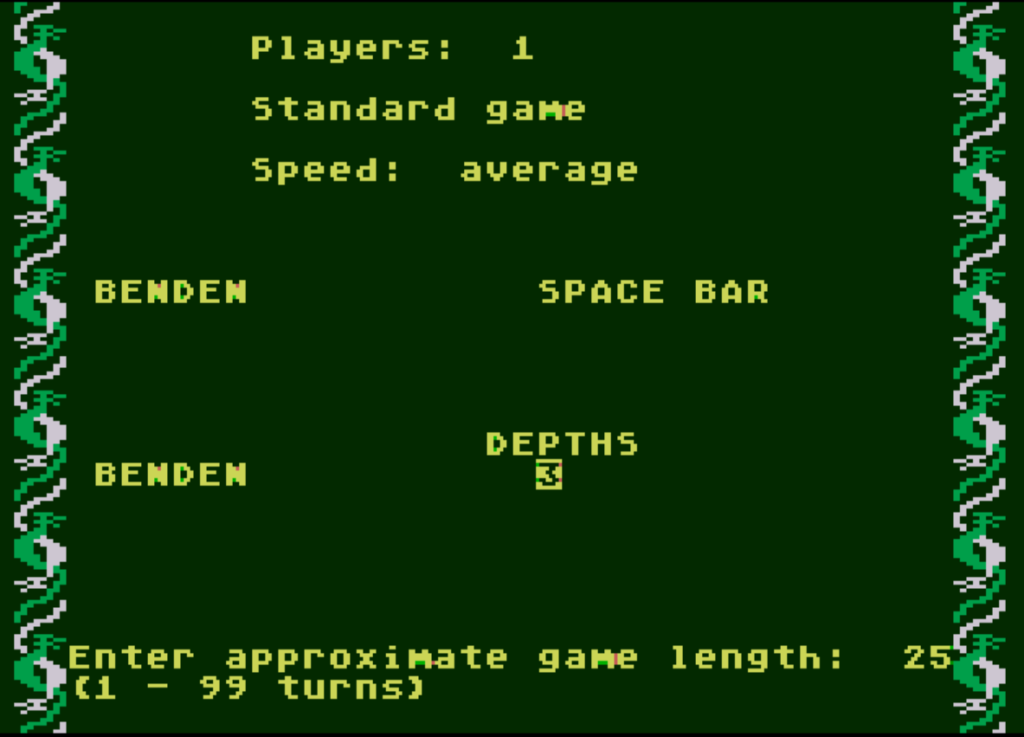
I am the Weyrleader of the Benden Weyr, so at the top of Pernese social hierarchy. The objective of the game is to finish a Turn (those Pernese years, not a game turn – McCaffrey should have future-proofed her terminology) with 20 VP, or alternatively with more VP than any of the other 5 Weyrs at the end of the game (Turn 25 in my case). On the other hand, if the Threads infest more than 20 Holds, the game is lost for all the Weyrs.
The game opens with a simple screen : the list of the 6 Weyrleaders, what each of them is doing, when they will end that action and finally the available dragon wings (=squadrons).
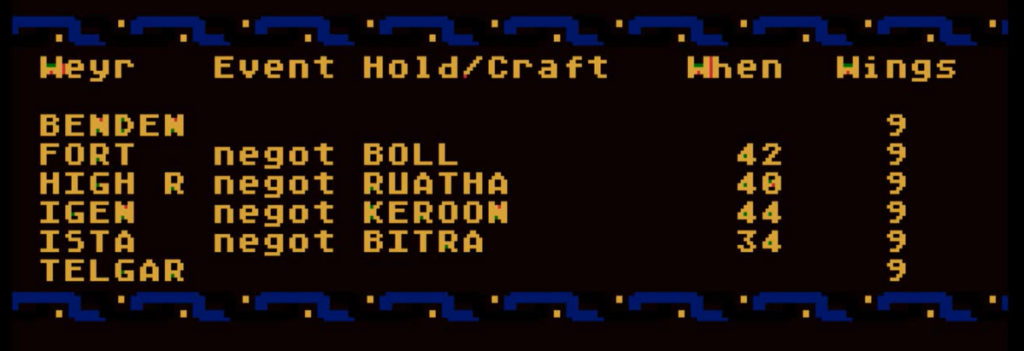
Only one action is available from that screen : “open the diplomatic menu”.
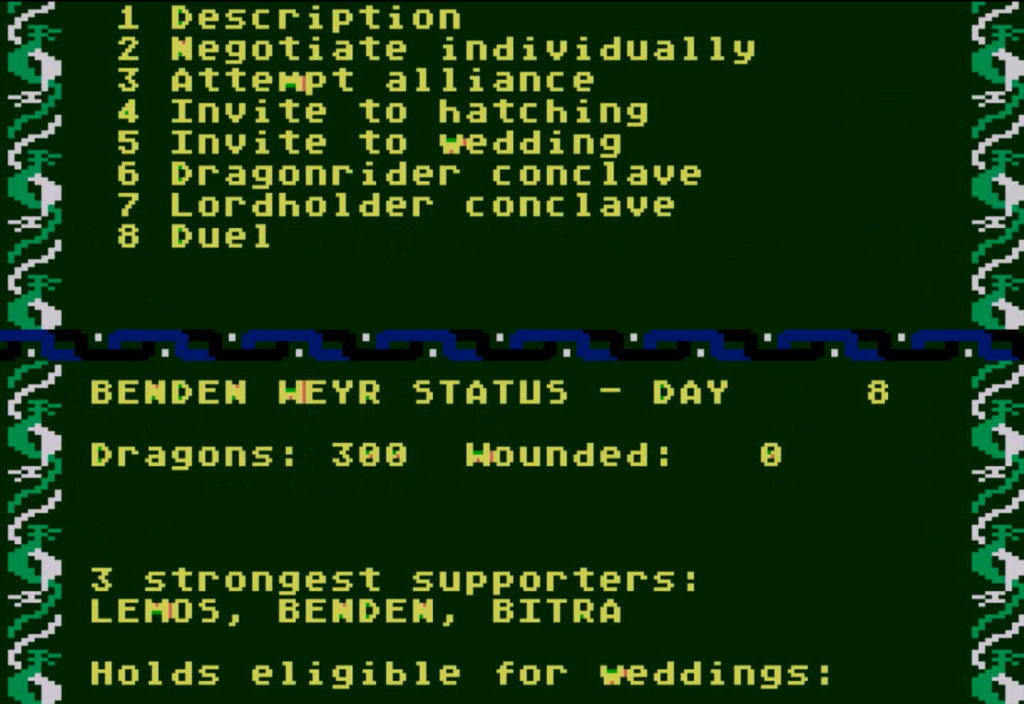
At this point, I cannot call a conclave, I do not have dragon eggs ready to hatch or anyone to marry, and I have no grudge against anyone, leaving only 3 options :
- Read a description of any of the other characters
- Negotiate, which actually means “nag them until they like you”
- Try to pass an alliance.
Whatever the decision, the “target” is chosen in a menu listing all the Holds, Craftmasters and Weyrleaders. Not all of these are available for all actions : you can’t ally with another Weyrleader for instance, and Lords or Craftmasters can be doing something else, in which case no interaction is possible.
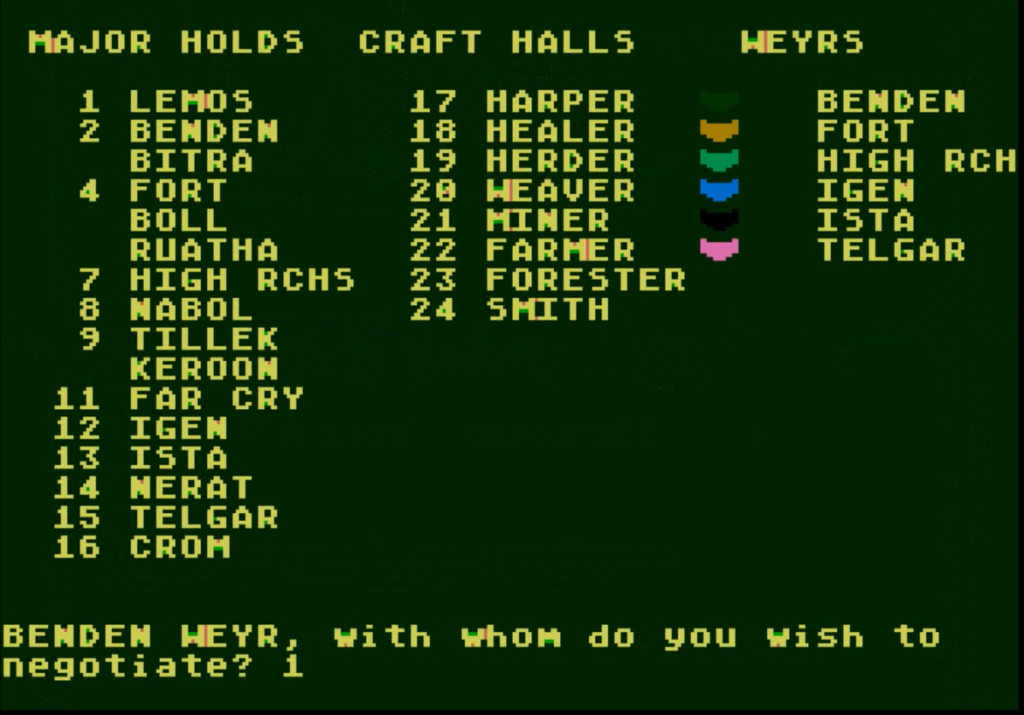
Whenever you try to negotiate, you can be helped by Craftmasters – provided as usual that they are not busy doing something with another Weyr – so my strategy is to befriend one of them first before trying to ally the Lords.
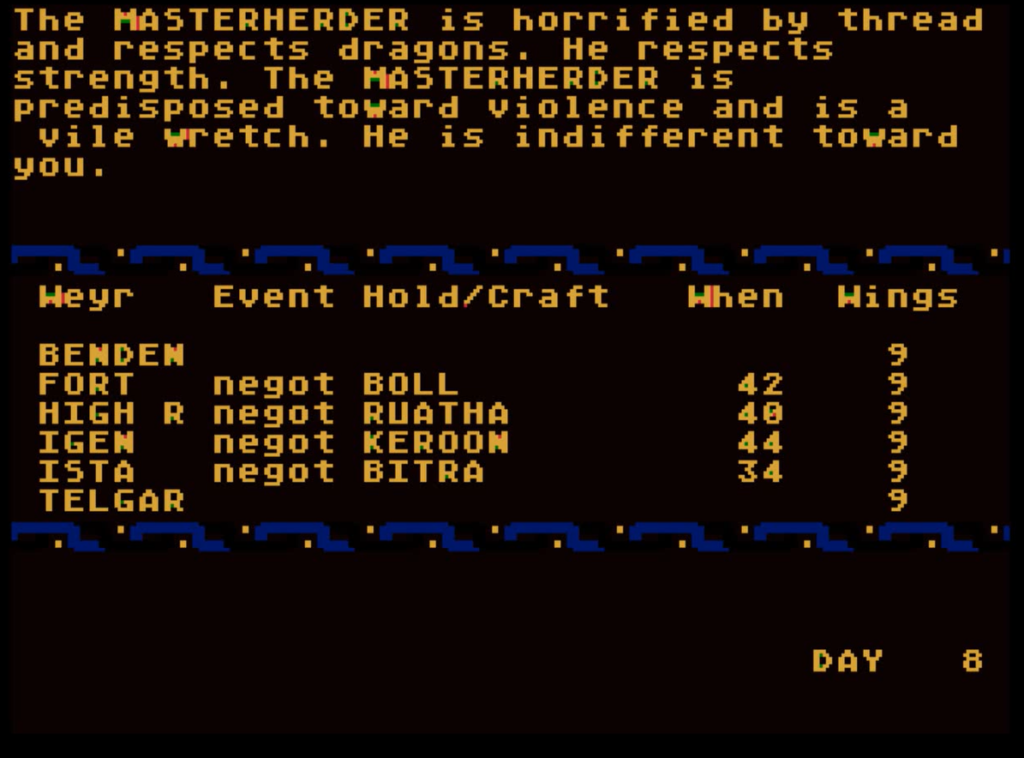
I focus on Master Harper : he has no red flags in his Myers-Brigg personality indicator, and the manual states that the Master Harpers are particularly good at helping you negotiate.

I initially try to be a nice guy, but this brings me nowhere.
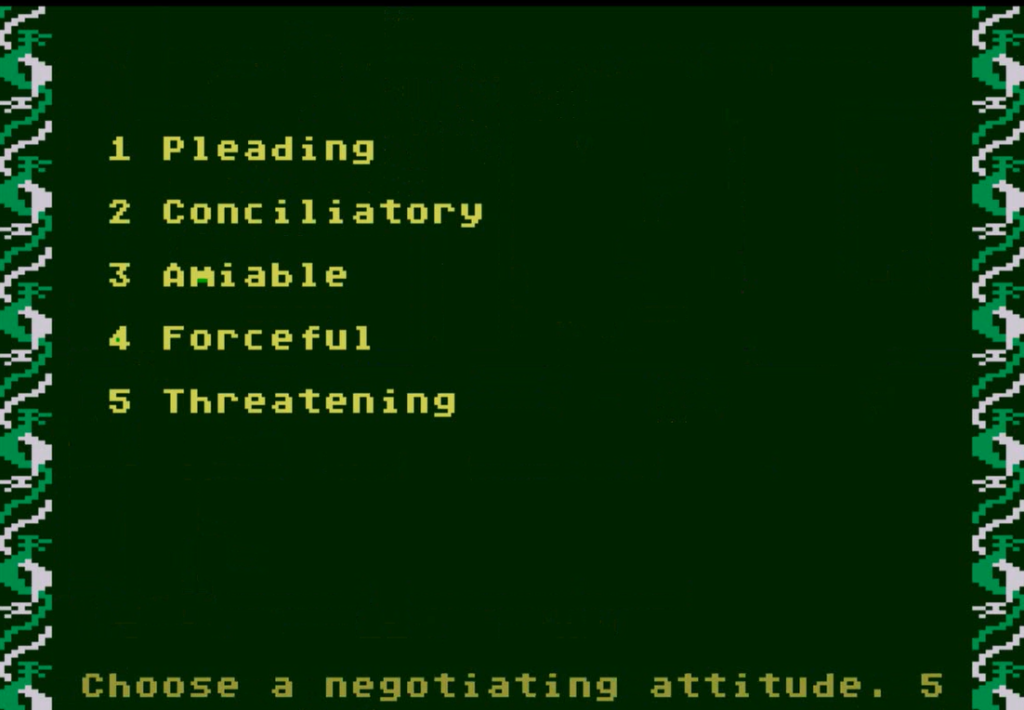
But I get a streak of luck. I am informed that some of my eggs are about to hatch, and that’s a culturally important event on Pern. I invite the Master Harper (he will be the first person to meet the newborn dragon) and 3 other Lords.
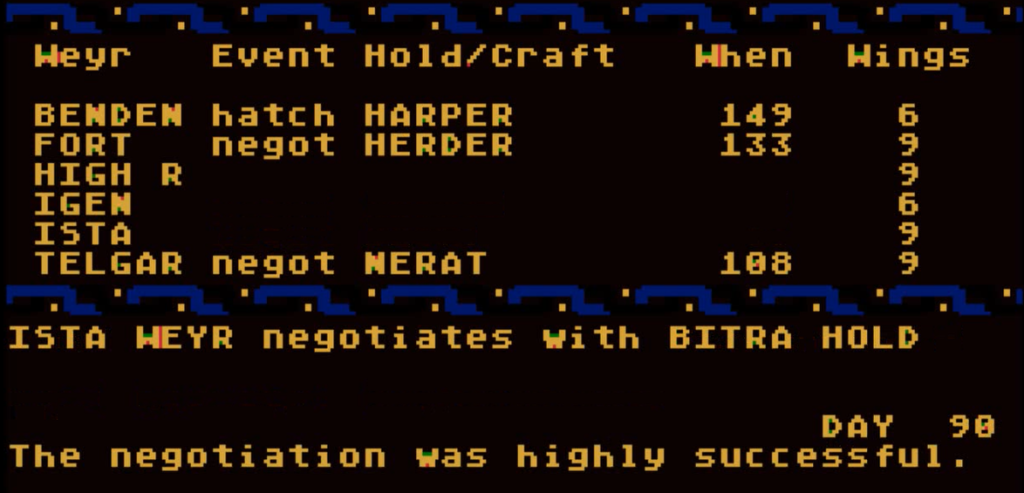
Before the ceremony takes place, I am blessed with another random event : I find more eggs that I immediately hand over to the Master Harper.

As we all know, baby dragons are the best way to a man’s heart, and now the Master Harper loves me. I soon sign an alliance.
As this unfolds, I am occasionally interrupted by alarms about Threads falling from the sky. I usually ignore them as they fall closer to other Weyrs, so it’s their problem, but when spores fall close to my turf I send some of my wings. All Weyrs start their Turn with 9 such Wings, whether they have 100 dragons or 1000, so I cannot defend everyone and reap the prestige.
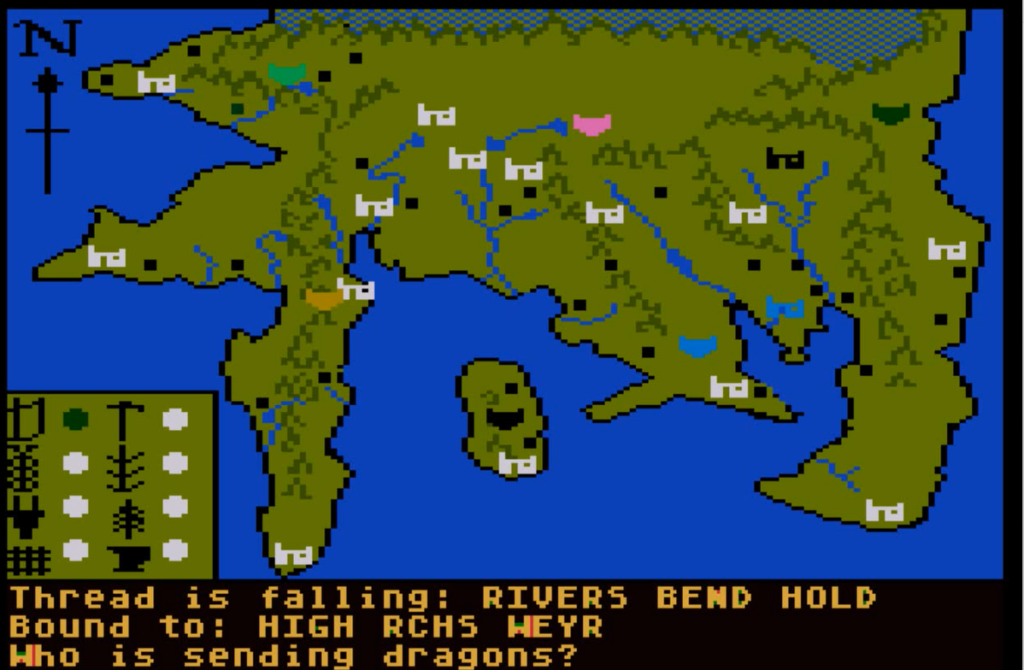
The year ends after 240 days. An alliance with a master craftsman only brings 1 victory point, vs 2 for a lord so I am not leading.

But before the new year can start, all the Thread air interceptions of the year are resolved. Surprise surprise : it is all arcade.
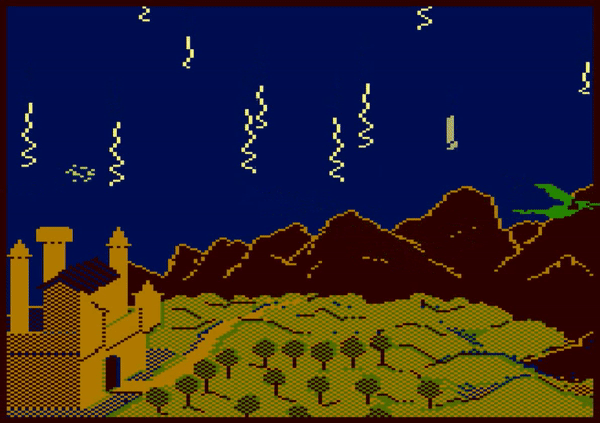
My dragon must shoot the Threads without touching them, and of course without letting them reach the ground. The subtlety is that there are 3 levels of depth in the “battle”, materialized by smaller or larger Threads. Passing in front or behind a Thread is safe, but of course you cannot shoot it either.
Once you trained a bit (something you can do from the main menu), it is rather easy to destroy all the Threads without losing any dragons. Unfortunately for Pern, the other Weyrs rarely perform perfectly. In addition, the game considers that if you did not send enough dragons some Threads will still make it through.
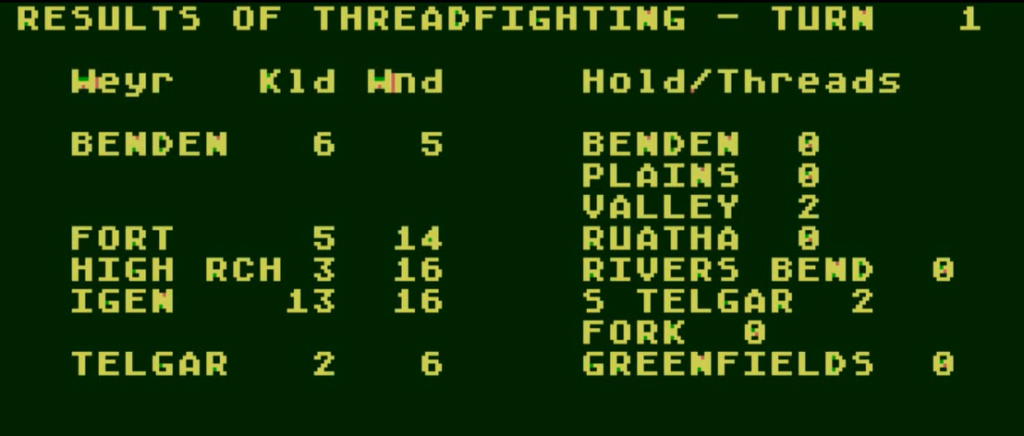
And the second Turn starts. With the Master Harper on speed dial and the popularity stemming from my victory against the Threads, it is now easy to secure alliances :
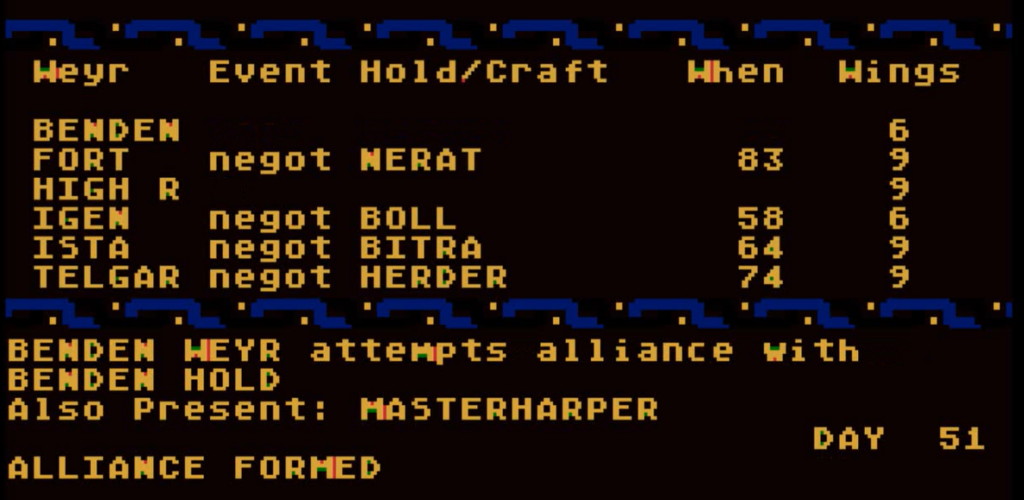
By the end of the year, I have 2 new alliances with my neighbours Lord Benden and Lord Lemos. What can I do with those alliances ? One would imagine I could tell them to round up their boys and then march on Telgar while I provide air support. This is not the case. Instead, alliances bring victory points, and open 2 more diplomatic actions whose ultimate purpose, of course, is to allow you to pass more alliances and gather more victory points.
So the new options are :
- Weddings (once by Lord), which improve your relationship with up to 4 attendees,
- Lordholder Conclaves, which is like an attempt to “negotiate” better relationship with ALL Lords at the same time. Don’t fail these.
Another option opened, but I am not sure why : Dragonrider Conclaves. They interrupt the actions of all the other Weyrleaders.
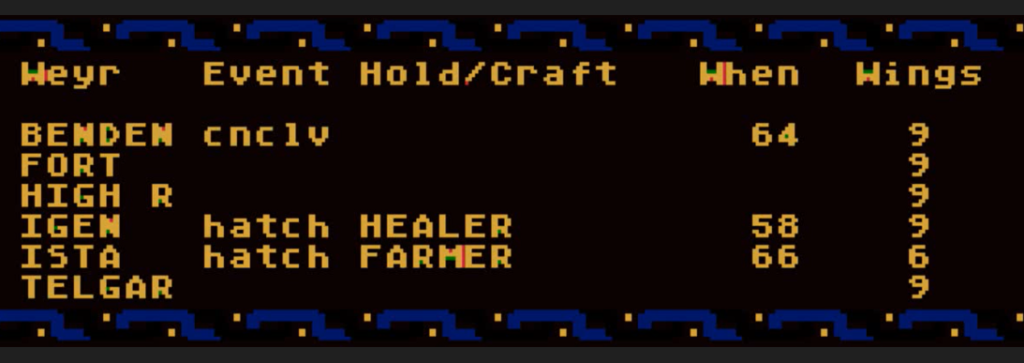
That’s all the game has to offer. This is Pern’s Best Friends Race with an occasional Thread-burning arcade phase, whose ultimate impact (if you don’t fail them totally) is to gain even more friendship points with a few select Lords.
I carry on playing, and I peak at the end of Turn 4 with 5 allied Holds in addition to the Master Harpers, bringing me to 11 points. Then it goes awry : the Master Harper dies, which means the alliance is forfeit. I manage to replace him in my friend list with the Master Herder, but I am soon thereafter wounded in a duel and quite simply unable to do ANYTHING until Turn 6, except react to Threads.
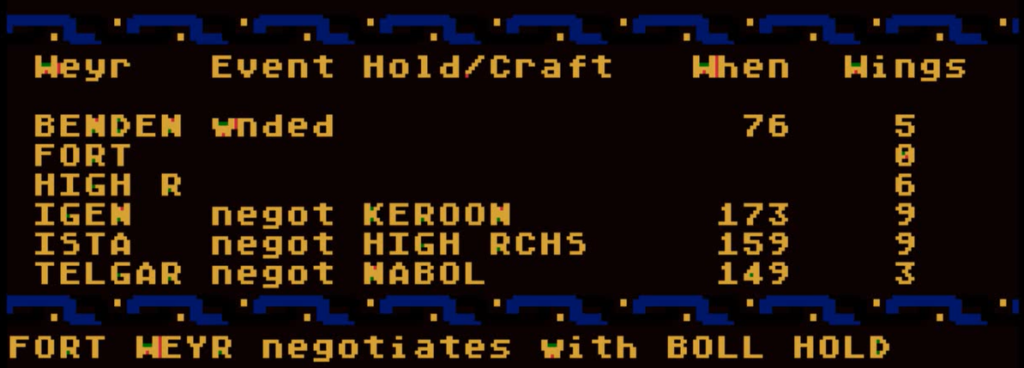
I spent 2 more Turns oscillating between 9 and 12 points. Math is against me : I can only ally Lords at a fixed rate, but my allies die or switch side at a rate proportional to their number. Finally, during the arcade phase of Turn 8, this happens :
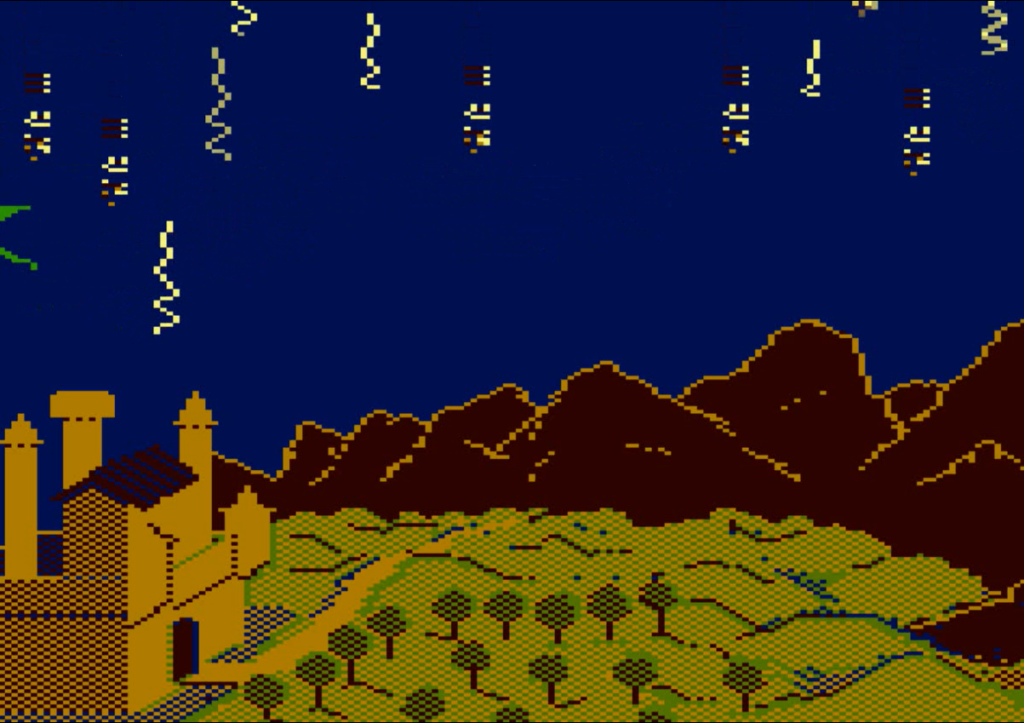
Is that a new kind of Thread ?
No, it is a bug. The game becomes unplayable, with my dragon becoming a cloud of pixels. I can’t shoot anymore, and all the Threads reach the ground. Loading a previous save does not solve the issue.
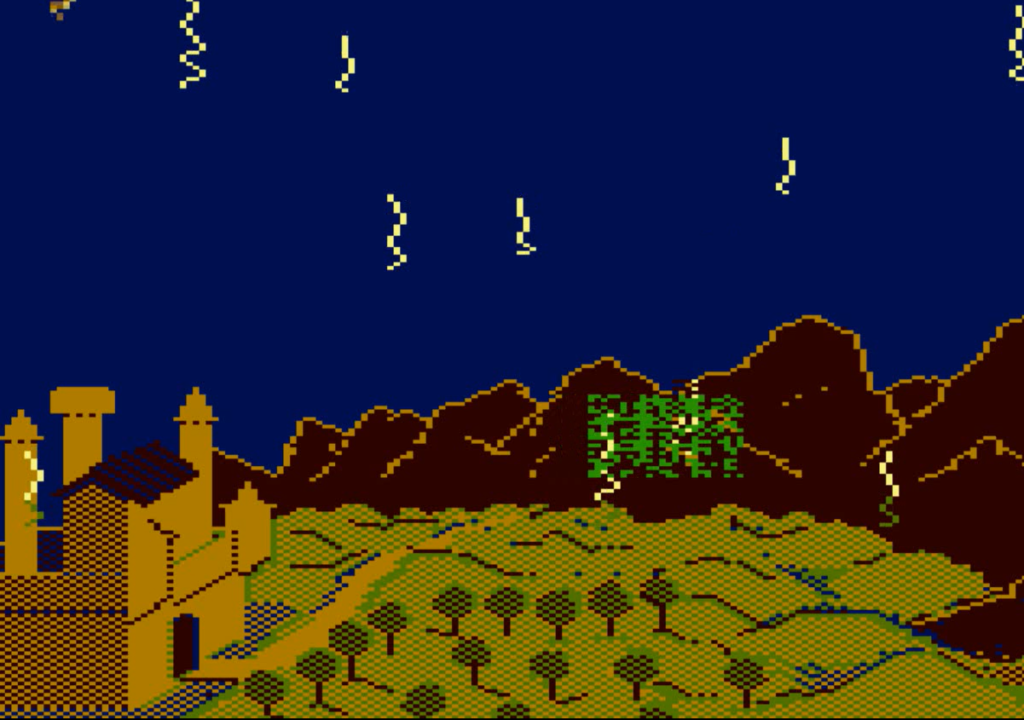
Honestly, this is just as well. 25 Turns at 5 minutes by Turn was going to be way too long for the enjoyment I was having from this game, which only avoids a BRIEF because my article ended up longer than expected.
Rating & Review
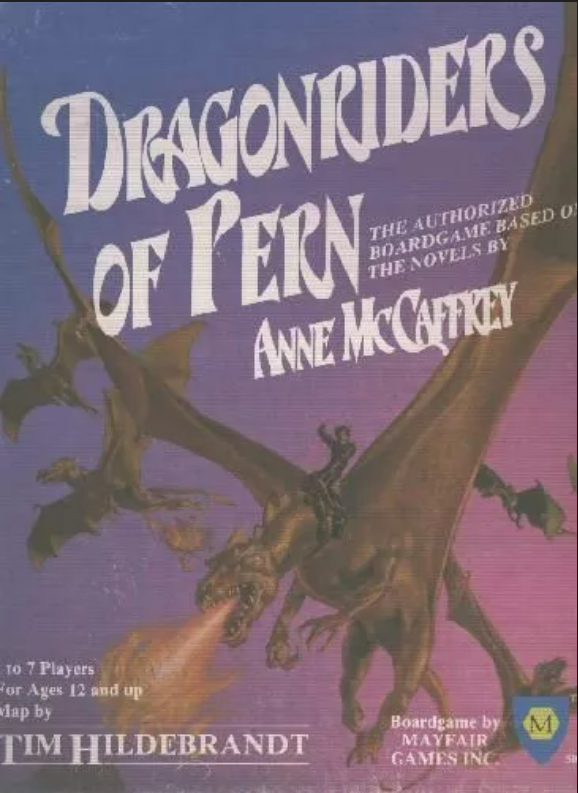
Dragonriders of Pern by the Connelley Group, published by Epyx
First release : August 1983 on Atari 8-bits and Commodore 64
Tested on : Altirra (Atari) and Vice (C64) emulators
Total time tested : Around 4 hours
Average duration of a campaign: 10 minutes by Turn
Complexity: Average (2/5)
Would recommend to a modern player : No
Would recommend to a designer : No
Final Rating: Totally obsolete
Ranking at the time of review : 81/84
Summary
Dragonriders of Pern is what happens when a game does not choose a target audience. The design is shallow and diluted between a bare-bone strategy phase, a repetitive arcade phase, and a UI that does not adapt to solitaire players. The end result is a game that wastes a good presentation and a solid-ish license by doing absolutely nothing well and being pointless for every possible audience.
The circumstances surrounding the release of Dragonriders of Pern are in my opinion more interesting than the game itself. I have already described the situation Epyx was in 1982 when I covered New World. Epyx had been founded by designer Jon Freeman and developer Jim Connelley in 1978. The company immediately met success with Temple of Apshai and Invasion Orion. Freeman left Epyx in 1981, leaving Jim Connelley alone at the helm. Connelley did not deliver, and the investors brought in new management with a new vision : less strategy games and RPGs, more mass-market games. Connelley did not share this vision, and left Epyx with a good number of devs, forming The Connelley Group. The relationships were not totally broken up : the first Connelley Group games (starting with Gateway to Apshai, yet another Temple of Apshai game) were published by Epyx. I suspect it was more mutual interest than respect though : Connelley needed a publisher, and Epyx’s production force had left with Connelley.
Enters Dragonriders of Pern. Epyx delivered the license, Connelly delivered the game. The game is sometimes described as a test of vision for Epyx, with Connelly being in a position to prove that his vision could triumph. I believe that this specific ship had sailed, and that the game was a different and more personal test : could Connelly design a game from the ground up without his historical designer Freeman ? I believe he failed this test, the game is subpar ; it sold poorly.
Dragonriders of Pern was released on two platforms : Atari and Commodore 64. Morpheus Kitami recently reviewed the game on Commodore 64 on his blog Almost a Famine, he also managed to finish a game so I recommend his article if you want to know more about it. As for me, Dragonriders of Pern not being a wargame, I will keep it short.
A. Immersion
Poor. The game has good music (for 1983), and the two screens that are not text-only (the Thread attacks and the map) look good, but most of the game is spent in front of a menu waiting for time to pass – and if you haven’t read the book the names of the Lords are just that : names.
B. UI , Clarity of rules and outcomes
Terrible. Dragonriders of Pern did not make a choice between single-player and multiplayer so the flow is the following :
- Choose an action, and only one,
- What until the action resolves, which can take a long time because every time something happens to one of the other five Weyrs, the game stops for several seconds, as if you cared for what happened there in single player.
Worse, while you wait, you cannot even do some reading and query the descriptions of the various Lords and Master Craftsmen to plan your next moves – you need to wait for your Weyrleader to be idle then query and speed read them with the time still running.
As for clarity of outcomes, the manual does not tell you much and I have no idea who to bring and what to say in a negotiation.
I am not the arcade scribe, so I will not comment on the arcade phase, Morpheus Kitami is the specialist, but even he did not find much to say.
C. Systems
Terrible. The game has two flaws that should not have passed a design review:
- Two phases that don’t talk to each other. Except if your performance is catastrophic, the action phase will only have a limited impact on the diplomatic phase. As for the diplomatic phase, nothing you can do will change anything on the arcade phase, which is always going to play the same, bugs notwithstanding,
- An utter lack of depth. 5 minutes into the game, you have done pretty much everything there is to do.
D. Scenario design & balancing
Hard to judge. Very poor ? It always plays the same, but then I suppose that if you like the license you don’t want the world to be randomized.
E. Did I make interesting decisions ?
Nope.
F. Final rating
Totally obsolete. Also not a wargame, but if you take the trappings of one I am going to rate you as one all the same.
Contemporary Reviews
Dragonriders of Pern generated few reviews, but those are better than I think the game deserved. Most focus on its originality, gloss over the weak action phase and describe the diplomatic part as a lot more engrossing than it is. For instance, this is how Shay Addams puts it in the October 1984 issue of Compute!
“Pern is unusual in its gameplay and structure, and even more so in its victory requirements—winning depends on getting characters to agree with you, not on the number killed by you. And if too many Holds get infested, no one wins. Much of the fun emerges from recognizing the traits of various characters, predicting and exploiting how they react to certain actions and persuasions, and ultimately being drawn into the day-to-day life and culture of Pern […]. Dragonriders of Pern is also an intriguing forerunner of the next generation of computer games, more than a few of which will also be based on established novels.”
Similarly, Ahoy! Magazine (March 1984) calls the game “frustrating at first”, but a “great adventure” for anyone willing to explore the genre. Finally, we have Computer Gaming World in August 1984, which calls the action phase unsatisfactory but states that the game will “appeal” to people interested in complex strategy games – hardly a glowing review, but still positive
Some players still remember the game fondly: the notoriously hard to please Evan Brooks still gave the game 2-stars-and-half in November 1992, and when William Hunter wrote the history of Epyx for his site The Dot Eaters he had such great memories of the game that he singled it out in a post-scriptum. Maybe you had to be there.
If you are sad about my removal of time-travel content, do not despair, Julian Gollop’s Timelords is coming next !